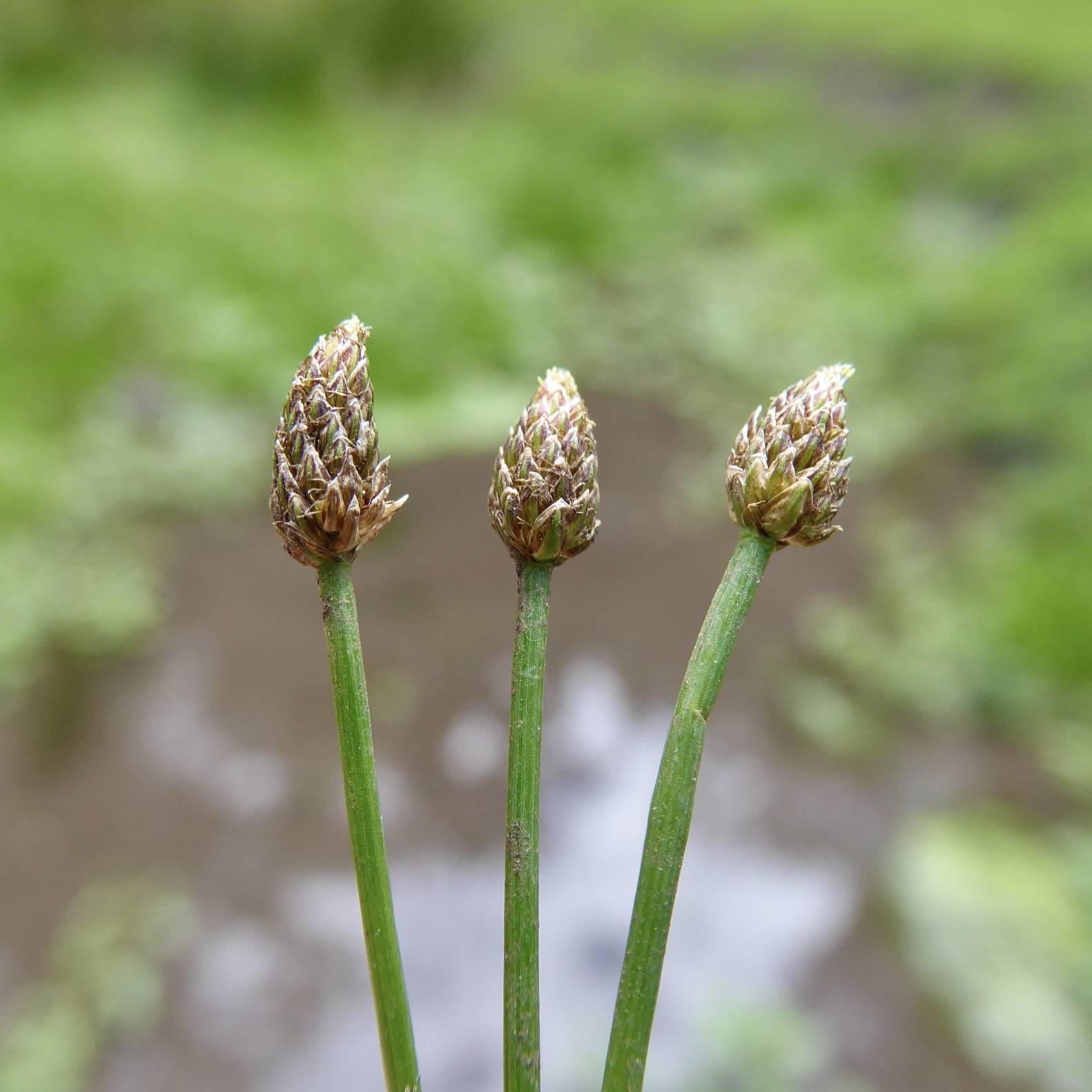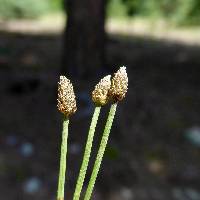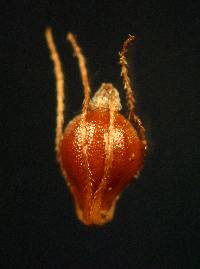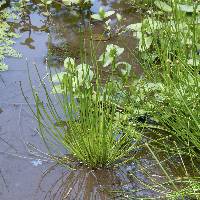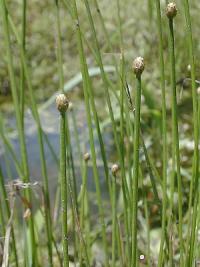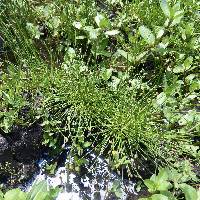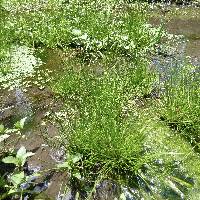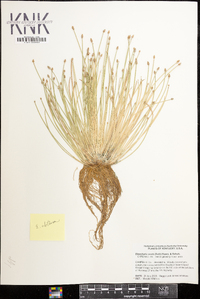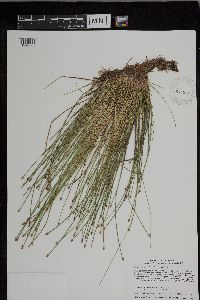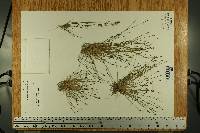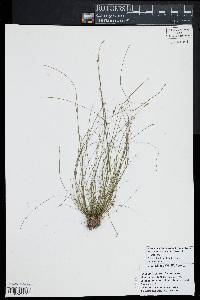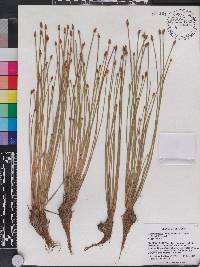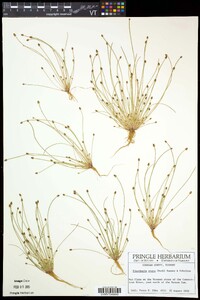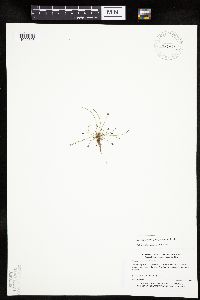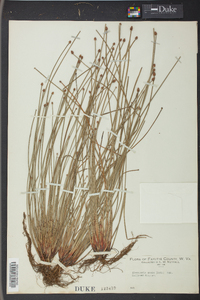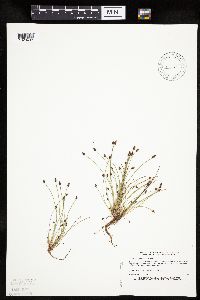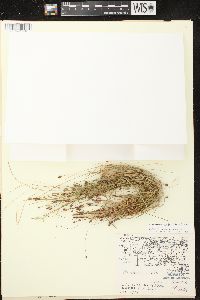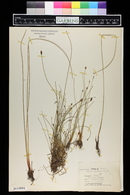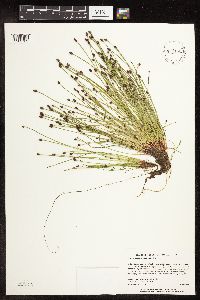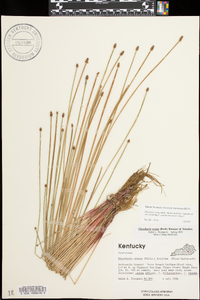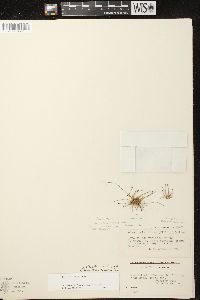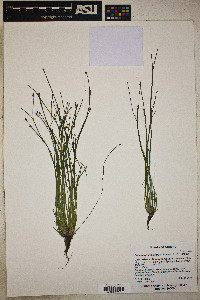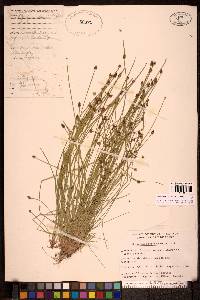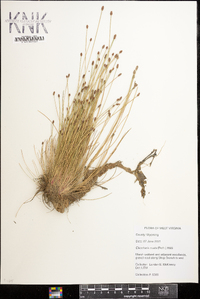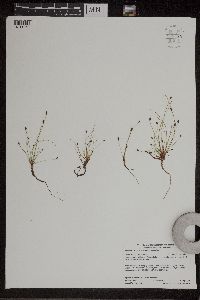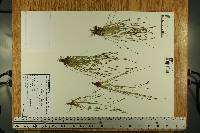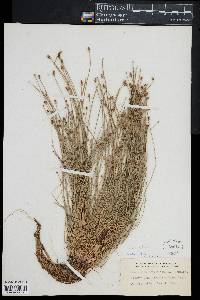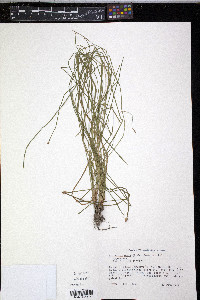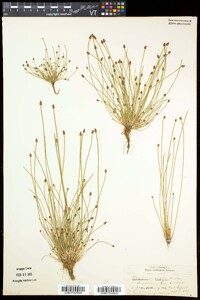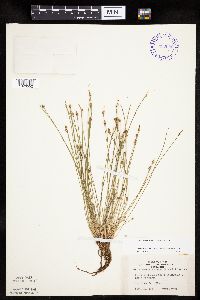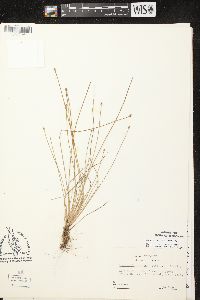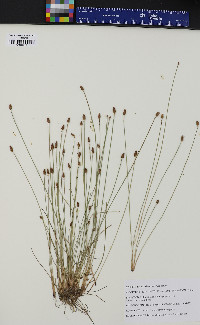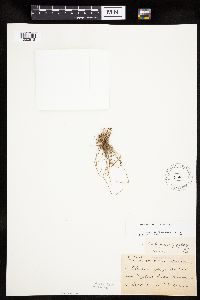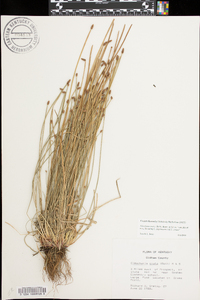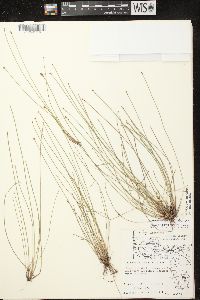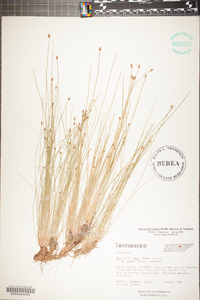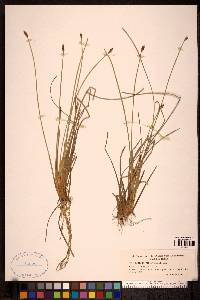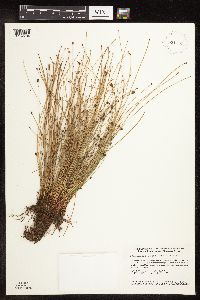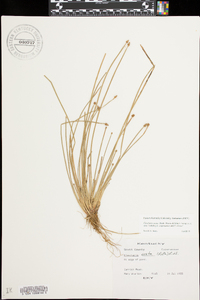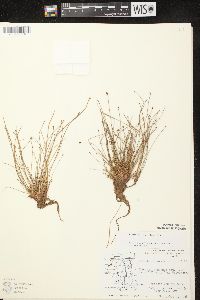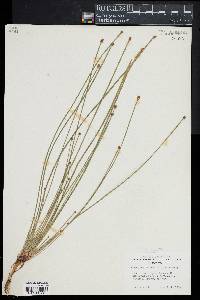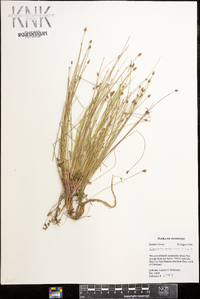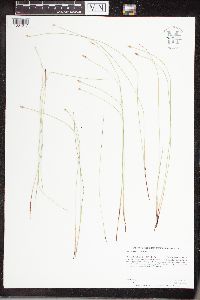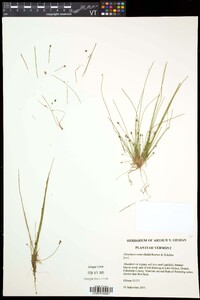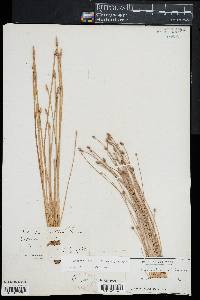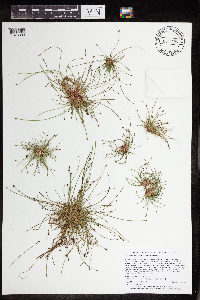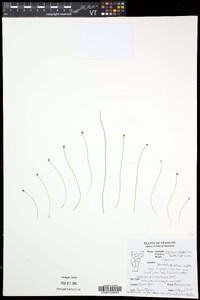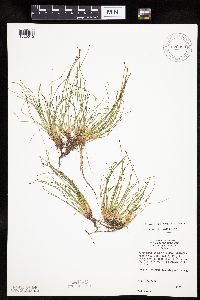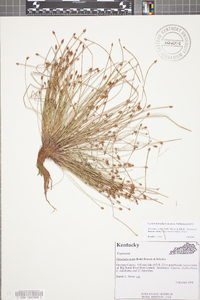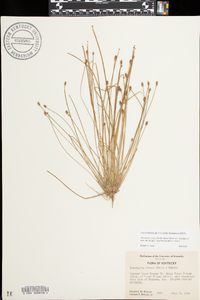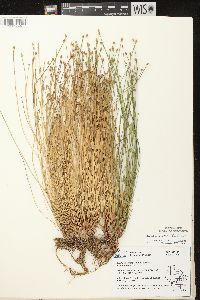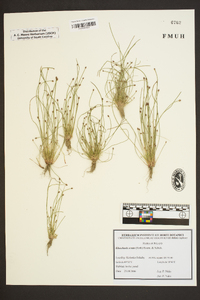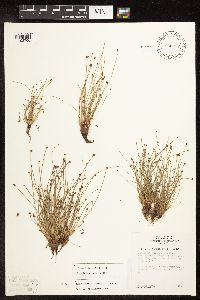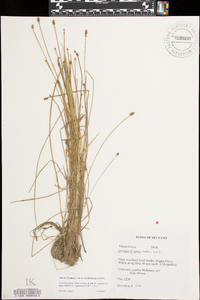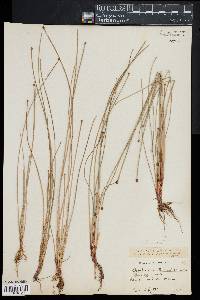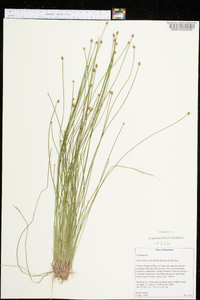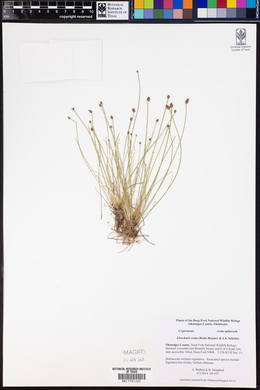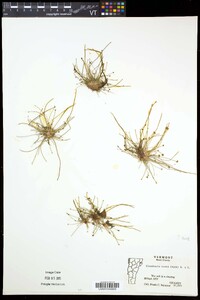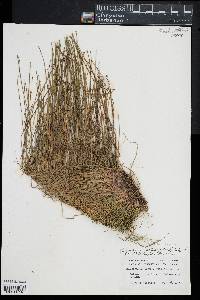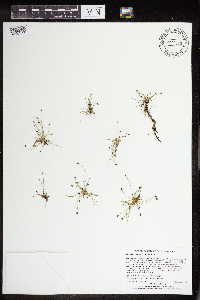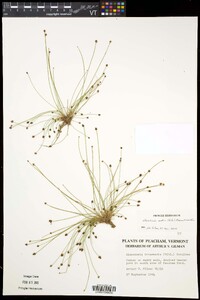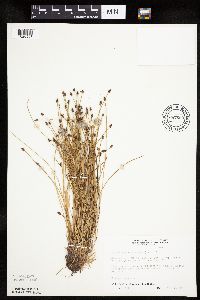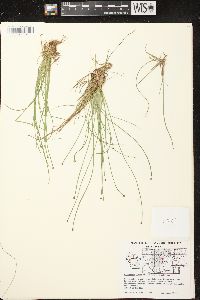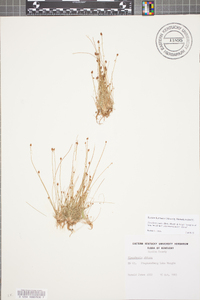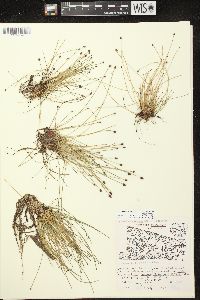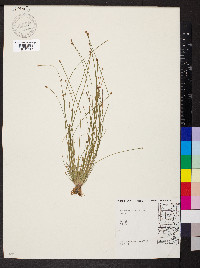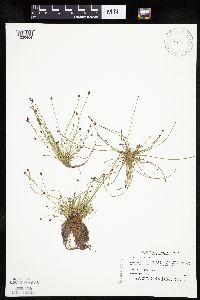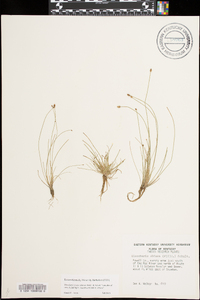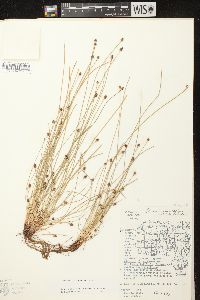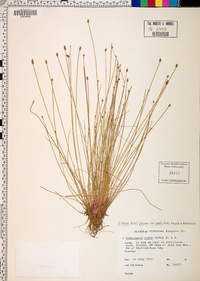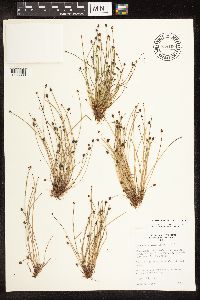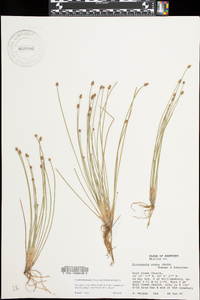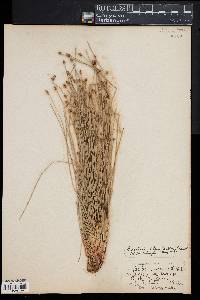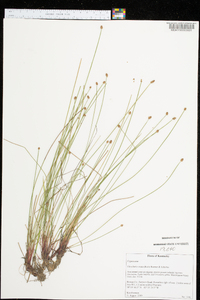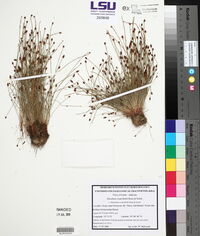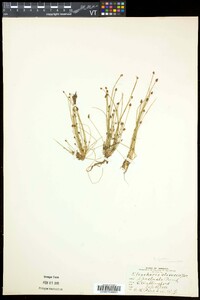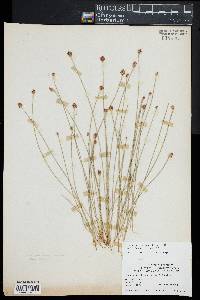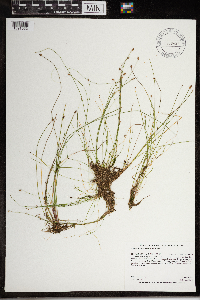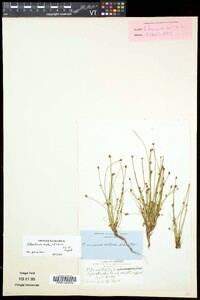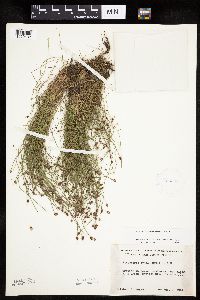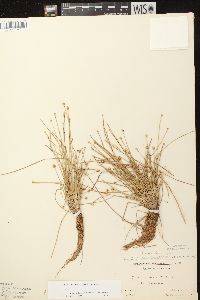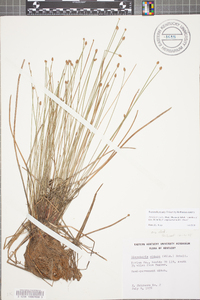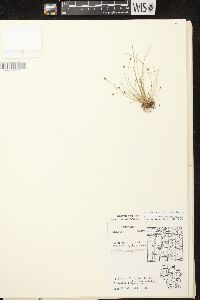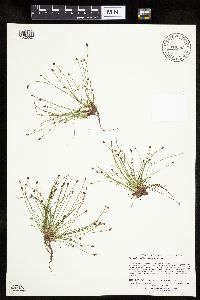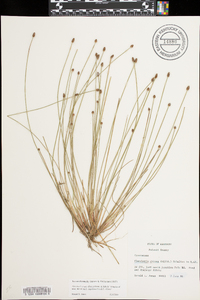Eleocharis ovata
|
|
|
|
Family: Cyperaceae
Ovate Spike-Rush, more...ovoid spike-rush, ovoid spikerush
[Eleocharis annua House, moreEleocharis obtusa var. heuseri Uechtr., Eleocharis obtusa var. ovata (Roth) Drapalik & Mohlenbrock, Eleocharis ovata var. aphanactis J.W.Moore, Eleocharis soloniensis , Eleocharis soloniensis var. nipponica , Scirpus compressus Moench, Scirpus multicaulis , Scirpus ovatus Roth] |
Culms 2-35 cm × 0.3-1 mm. Leaves: apex of distal leaf sheath obtuse to acute, tooth to 0.2 mm. Spikelets ovoid, 2-8 × 2-4 mm, apex acute (to blunt); floral scales 25-100+, ca. 10 per mm of rachilla, orange-brown, rarely stramineous, ovate, 1.5-2 × 1 mm, midribs often keeled in distal part of spikelet, apex rounded to subacute. Flowers: perianth bristles present, rarely absent, (5-)6-7, brown, fairly slender, exceeding tubercle; stamens 2(-3); anthers brown, 0.3 mm; styles 2-fid or some 3-fid. Achenes 0.75-1 × 0.6-0.85 mm. Tubercles deltoid, 0.3-0.5 × 0.3-0.5 mm, 3/5 of to as high as wide, 1/3-2/3 as high and 1/2-3/4 as wide as achene. 2n = 10. Fruiting summer-fall. Fresh, often drying shores, lake and stream beds, bogs, tidal estuaries, disturbed places; 10-700 m (East), 1500-2000 m (Arizona); Alta., B.C., N.B., Nfld. and Labr., N.S., Ont., P.E.I., Que.; Ariz., Conn., Ill., Ind., Iowa, Ky., Maine, Mass., Mich., Minn., Mo., N.H., N.J., N.Y., Ohio, Okla., Oreg., Pa., Vt., Va., Wash., W.Va., Wis.; Eurasia. Although Eleocharis ovata has often been confused with E. obtusa, B. M. H. Larson and P. M. Catling (1996) showed that these species may be distinguished by non-overlapping widths of the tubercles, at least in Canada. The records of E. ovata in New Brunswick, Newfoundland, Nova Scotia, and Prince Edward Island are based on B. M. H. Larson and P. M. Catling (1996) and the records in Illinois, Indiana, Missouri, Montana, New Jersey, Oregon, and Washington are based on D. M. Hines (1975). Eleocharis ovata probably also occurs in Manitoba and Saskatchewan.
Annual herb, tufted 2 - 35 cm tall Leaves: reduced to bladeless sheaths, basal, two per culm, margins fused and enclosing culm, with a blunt to pointed apex which bears a tiny tooth. Flowers: minute, spirally arranged on the axis of the spikelet, lacking sepals and petals, with five to seven bristles (sometimes reduced or lacking), subtended by a scale. Bristles brown, longer than the achene, slender, shortly barbed. Stamens usually two, exserted. Anthers brown, to 0.3 mm long. Pistil one. Style two-cleft, some three-cleft. Fruit: a one-seeded achene, straw-colored to olive or brown, about 1 mm long and 0.75 mm wide, lenticular (lens-shaped), shiny. Tubercle to 0.5 mm long and wide, triangular. Seed with a thin, non-adherent wall. Culm: unbranched, 2 - 35 cm long, to 1 mm wide, ribbed, enclosed basally by two fused sheaths. Spikelets: solitary, 2 - 8 mm long, 2 - 4 mm wide, egg-shaped with a pointed apex, with 25 to 100 or more floral scales. Scales spirally arranged and overlapping, orangish brown, 1.5 - 2 mm long, to 1 mm wide, egg-shaped with a rounded to nearly pointed apex, often keeled on the midrib. Similar species: No information at this time. Flowering: May to September Habitat and ecology: Rare, if at all present, in the Chicago Region. Typical of wet ground. Occurence in the Chicago region: native Etymology: Eleocharis comes from the Greek words heleios, meaning "dwelling in a marsh," and charis, meaning grace. Ovata means ovate (egg-shaped; oval). Author: The Morton Arboretum Tufted and apparently annual, but sometimes with slender, short, inconspicuous rhizomes within the tuft; stems 0.5-5 dm, several- to many-ribbed, 0.5-2 mm thick; spikelet 5-13 mm, ovoid, with many (seldom less than 40) fls; scales 1.7-2.5 mm, purplish or brownish, with greenish midstrip and paler, hyaline margins, the lowest one empty or
floriferous; bristles mostly 6 or 7, brownish, retrorsely barbellate, equaling or surpassing the achene, or reduced or wanting; anthers 0.3-0.8 mm; style bifid or sometimes trifid; achene lenticular (even when the style is trifid), 1-1.5 mm, stramineous to olive or dark brown, smooth and shining; tubercle short, flattened, broad-based, appressed to the broad top of the achene; 2n=10. Marshes and other wet places, sometimes intertidal, widespread in the N. Hemisphere, and found throughout our range. (E. diandra, an
intertidal ecotype; E. engelmannii; E. obtusa) Gleason, Henry A. & Cronquist, Arthur J. 1991. Manual of vascular plants of northeastern United States and adjacent Canada. lxxv + 910 pp. ©The New York Botanical Garden. All rights reserved. Used by permission. From Flora of Indiana (1940) by Charles C. Deam My only specimen was collected in the bottom of a dried-up dredged ditch about 4 miles southeast of Conrad in Newton County and determined by H. K. Svenson. It has been reported from Lake and Porter Counties by Peattie but I have not seen a specimen. ...... Indiana Coefficient of Conservatism: C = 10 Wetland Indicator Status: OBL |
|
|
|

